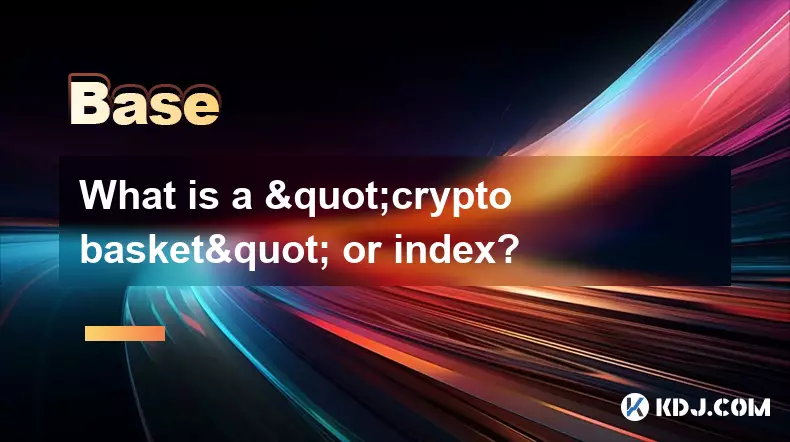-
 Bitcoin
Bitcoin $112100
0.77% -
 Ethereum
Ethereum $4474
3.78% -
 XRP
XRP $2.851
0.46% -
 Tether USDt
Tether USDt $1.000
0.01% -
 BNB
BNB $856.0
0.45% -
 Solana
Solana $209.3
1.04% -
 USDC
USDC $0.9998
-0.02% -
 Dogecoin
Dogecoin $0.2216
3.68% -
 TRON
TRON $0.3420
1.19% -
 Cardano
Cardano $0.8415
1.56% -
 Chainlink
Chainlink $23.79
1.74% -
 Hyperliquid
Hyperliquid $46.03
3.38% -
 Ethena USDe
Ethena USDe $1.001
0.04% -
 Sui
Sui $3.399
2.98% -
 Bitcoin Cash
Bitcoin Cash $599.8
3.03% -
 Stellar
Stellar $0.3628
-0.44% -
 Avalanche
Avalanche $25.24
4.29% -
 Cronos
Cronos $0.2809
9.58% -
 Hedera
Hedera $0.2203
0.68% -
 UNUS SED LEO
UNUS SED LEO $9.526
-0.04% -
 Litecoin
Litecoin $112.7
0.88% -
 Toncoin
Toncoin $3.188
0.41% -
 Shiba Inu
Shiba Inu $0.00001253
0.80% -
 Polkadot
Polkadot $3.891
2.61% -
 Uniswap
Uniswap $9.732
2.10% -
 Bitget Token
Bitget Token $4.971
-2.70% -
 Dai
Dai $0.0000
0.01% -
 World Liberty Financial
World Liberty Financial $0.2148
-8.62% -
 Aave
Aave $327.8
3.77% -
 Monero
Monero $270.0
1.47%
What is staking in cryptocurrency?
Staking allows crypto holders to earn rewards by locking coins to support proof-of-stake networks, but involves risks like slashing, volatility, and lock-up periods.
Sep 04, 2025 at 02:55 am

Understanding Cryptocurrency Staking
1. Staking refers to the process of actively participating in transaction validation on a proof-of-stake (PoS) blockchain. Instead of relying on energy-intensive mining, PoS blockchains allow users to lock up their coins as collateral to support network operations. By doing so, participants are selected to validate new blocks and earn rewards in return.
2. When a user stakes their cryptocurrency, they are essentially committing their holdings to help maintain the integrity and security of the network. The likelihood of being chosen to validate a block is often proportional to the amount of cryptocurrency staked. Larger stakes increase the chances of earning block rewards, although some systems implement randomization to prevent centralization.
3. Staking is not limited to a single blockchain. Major networks like Ethereum (post-Merge), Cardano, Solana, and Polkadot have adopted PoS or variants of it. Each network has its own rules regarding minimum stake amounts, staking duration, and reward distribution. Users must adhere to these parameters to participate effectively.
4. One of the primary incentives for staking is the passive income it generates. Rewards are typically distributed in the same cryptocurrency that is staked. These returns can vary significantly based on network demand, inflation rates, and overall participation levels. Some platforms offer annual percentage yields (APYs) ranging from 3% to over 20%, depending on the asset and protocol.
5. Staking can be done directly through a wallet that supports the feature or via centralized exchanges that offer staking services. While exchange-based staking offers convenience, it often means relinquishing control of private keys. Direct staking gives users full custody but requires technical setup and ongoing management.
Risks Associated with Staking
1. One of the most significant risks is slashing, a penalty imposed when a validator acts maliciously or fails to perform duties properly. If a node goes offline or attempts to validate fraudulent transactions, part of the staked funds can be forfeited. This mechanism ensures accountability within the network.
2. Market volatility presents another major concern. While staking rewards may be substantial, the value of the underlying cryptocurrency can drop sharply. A user might earn consistent rewards in token quantity but still face losses in fiat terms if the price declines during the staking period.
3. Liquidity constraints are common in staking. Many protocols enforce lock-up periods during which staked assets cannot be withdrawn or traded. This lack of flexibility can be problematic if a user needs immediate access to funds or wants to react to market movements.
4. Smart contract vulnerabilities pose a threat, especially in decentralized finance (DeFi) staking platforms. Bugs or exploits in the code can lead to loss of staked assets. Users must carefully evaluate the security audits and reputation of any platform before committing funds.
5. Regulatory uncertainty also looms over staking activities. In some jurisdictions, staking may be classified as a financial service, potentially triggering compliance obligations. Changes in legislation could impact how rewards are taxed or whether staking is legally permitted at all.
Staking Pools and Delegation
1. Not all users have enough cryptocurrency to meet minimum staking requirements or operate a validator node. Staking pools allow multiple participants to combine their resources and increase their chances of earning rewards. The pool operator manages the technical aspects, and rewards are distributed proportionally among contributors.
2. Delegation is a related concept where users assign their staking power to an existing validator without transferring ownership of their assets. This approach is popular on networks like Cosmos and Tezos. Delegators retain control of their funds while benefiting from the validator’s infrastructure and uptime.
3. Choosing a reliable validator or pool operator is critical. Factors such as historical uptime, commission fees, and transparency should be evaluated. A poorly performing validator can result in missed rewards or even slashing penalties passed on to delegators.
4. Some platforms offer liquid staking derivatives. These are tokens that represent staked assets and can be traded or used in DeFi applications while the original stake remains active. For example, stETH on Ethereum allows users to earn staking rewards while maintaining liquidity through secondary markets.
5. Participating in staking requires careful research and risk assessment. Users should understand the technical, financial, and regulatory implications before committing their assets to any staking mechanism.
Frequently Asked Questions
What happens if I unstake my cryptocurrency?Unstaking initiates a withdrawal process that may take several days, depending on the network. During this period, the assets are no longer earning rewards and cannot be used until fully released.
Can I lose money by staking?Yes, due to market price drops, slashing penalties, or smart contract failures, it is possible to lose value even while earning staking rewards.
Is staking the same as mining?No. Mining uses computational power to solve cryptographic puzzles in proof-of-work systems, while staking involves holding and locking coins to support a proof-of-stake network.
Do all cryptocurrencies support staking?No. Only cryptocurrencies that operate on a proof-of-stake or similar consensus mechanism allow staking. Bitcoin, for example, does not support staking as it uses proof-of-work.
Disclaimer:info@kdj.com
The information provided is not trading advice. kdj.com does not assume any responsibility for any investments made based on the information provided in this article. Cryptocurrencies are highly volatile and it is highly recommended that you invest with caution after thorough research!
If you believe that the content used on this website infringes your copyright, please contact us immediately (info@kdj.com) and we will delete it promptly.
- C2 Blockchain's DOG Coin Gambit: Bridging Memes and Bitcoin Assets
- 2025-09-04 12:25:13
- Crypto Treasury, Startup Strategies, & Investment Opportunities: A New Yorker's Take
- 2025-09-04 09:05:12
- Moca Network's $20M Portfolio: A New Era for Community Rewards?
- 2025-09-04 09:05:12
- XDC Network Price Prediction 2026: Is XDC the Dark Horse of Crypto?
- 2025-09-04 08:25:15
- BullZilla Roar, Bonk Stablecoin, and Solana Alpenglow: The Evolution of Meme Coins
- 2025-09-04 09:25:17
- TRON, GDP Data, and the Commerce Department: A Blockchain Milestone
- 2025-09-04 09:25:17
Related knowledge

What is "backtesting" a crypto trading strategy?
Sep 03,2025 at 10:55am
Understanding Backtesting in Crypto TradingBacktesting is the process of evaluating a trading strategy by applying it to historical market data. Trade...

What is a "crypto trading bot" and do they work?
Sep 02,2025 at 04:19pm
Understanding Crypto Trading Bots1. A crypto trading bot is a software application designed to automate the process of buying and selling cryptocurren...

What is a "copy trading" platform?
Sep 02,2025 at 07:00pm
Understanding Copy Trading in the Cryptocurrency Space1. A copy trading platform allows users to automatically replicate the trades of experienced inv...

What is "social trading" for crypto?
Sep 03,2025 at 09:00pm
Understanding Social Trading in the Cryptocurrency Space1. Social trading refers to a method where investors observe, follow, and automatically replic...

What is a "crypto basket" or index?
Sep 03,2025 at 07:01am
Understanding Crypto Baskets and Their Role in Digital Asset Investment1. A crypto basket refers to a curated collection of multiple cryptocurrencies ...

What are "impermanent loss" calculators?
Sep 03,2025 at 12:00pm
Understanding Impermanent Loss in Decentralized Finance1. Impermanent loss is a phenomenon that affects liquidity providers in decentralized exchanges...

What is "backtesting" a crypto trading strategy?
Sep 03,2025 at 10:55am
Understanding Backtesting in Crypto TradingBacktesting is the process of evaluating a trading strategy by applying it to historical market data. Trade...

What is a "crypto trading bot" and do they work?
Sep 02,2025 at 04:19pm
Understanding Crypto Trading Bots1. A crypto trading bot is a software application designed to automate the process of buying and selling cryptocurren...

What is a "copy trading" platform?
Sep 02,2025 at 07:00pm
Understanding Copy Trading in the Cryptocurrency Space1. A copy trading platform allows users to automatically replicate the trades of experienced inv...

What is "social trading" for crypto?
Sep 03,2025 at 09:00pm
Understanding Social Trading in the Cryptocurrency Space1. Social trading refers to a method where investors observe, follow, and automatically replic...

What is a "crypto basket" or index?
Sep 03,2025 at 07:01am
Understanding Crypto Baskets and Their Role in Digital Asset Investment1. A crypto basket refers to a curated collection of multiple cryptocurrencies ...

What are "impermanent loss" calculators?
Sep 03,2025 at 12:00pm
Understanding Impermanent Loss in Decentralized Finance1. Impermanent loss is a phenomenon that affects liquidity providers in decentralized exchanges...
See all articles

























































































